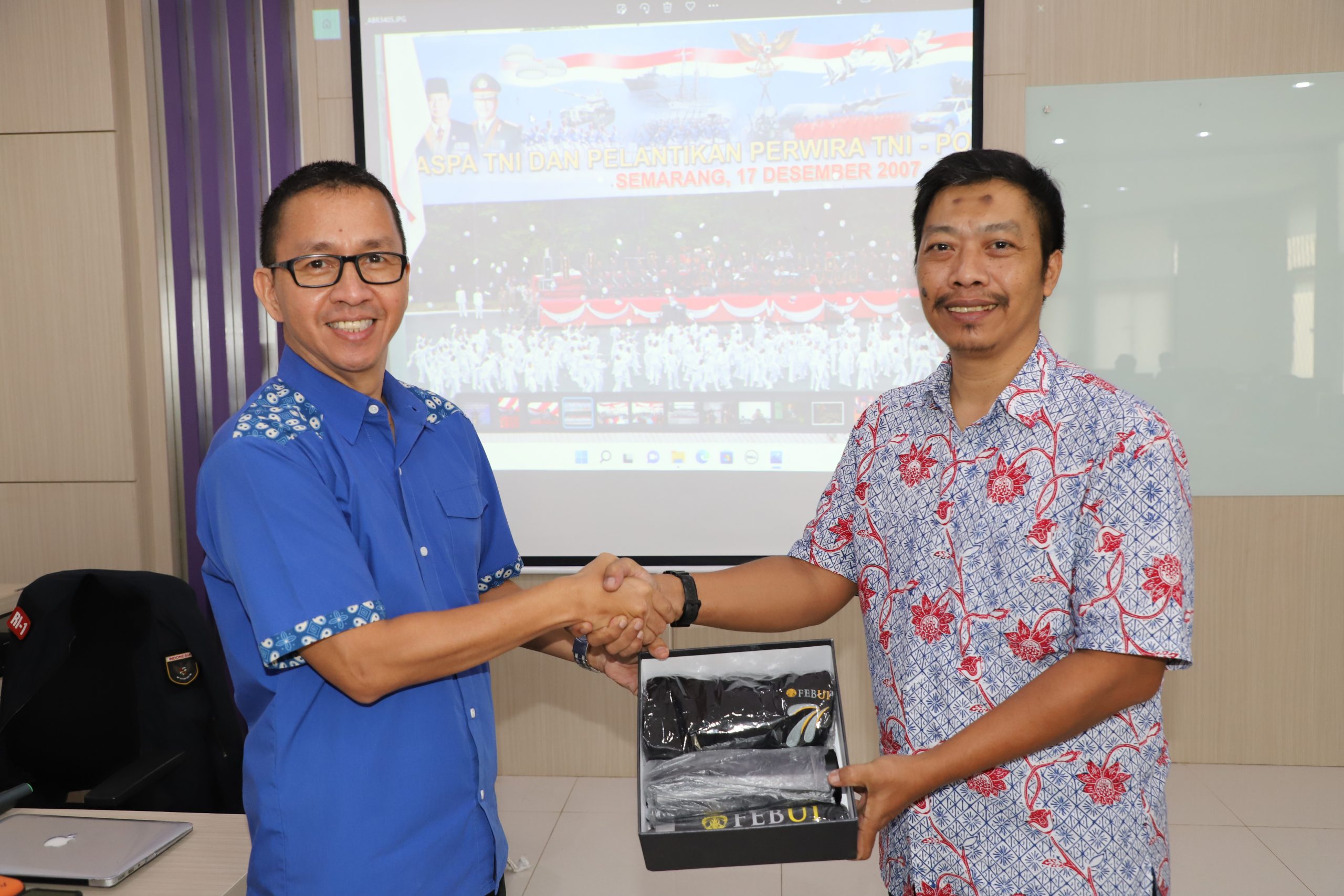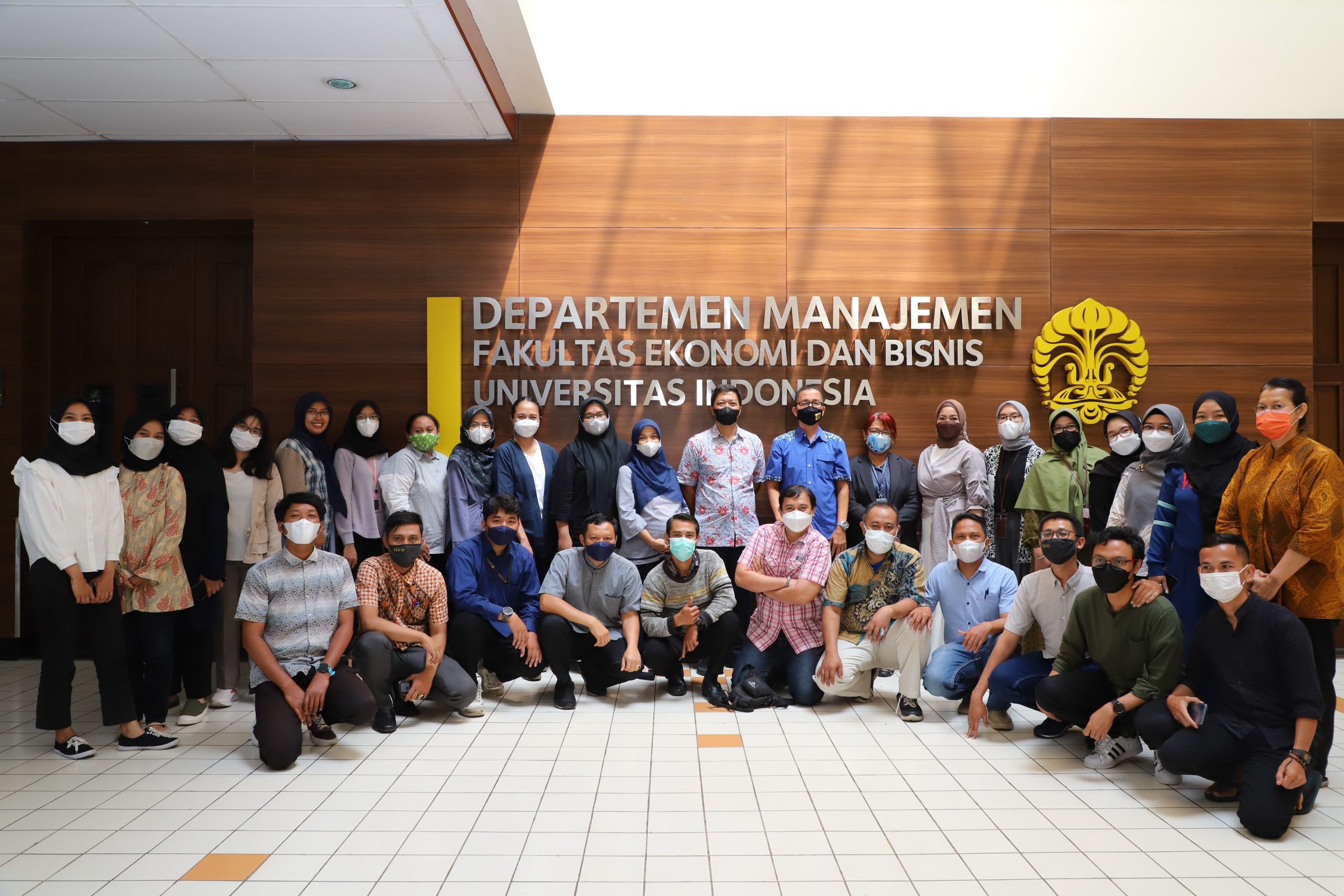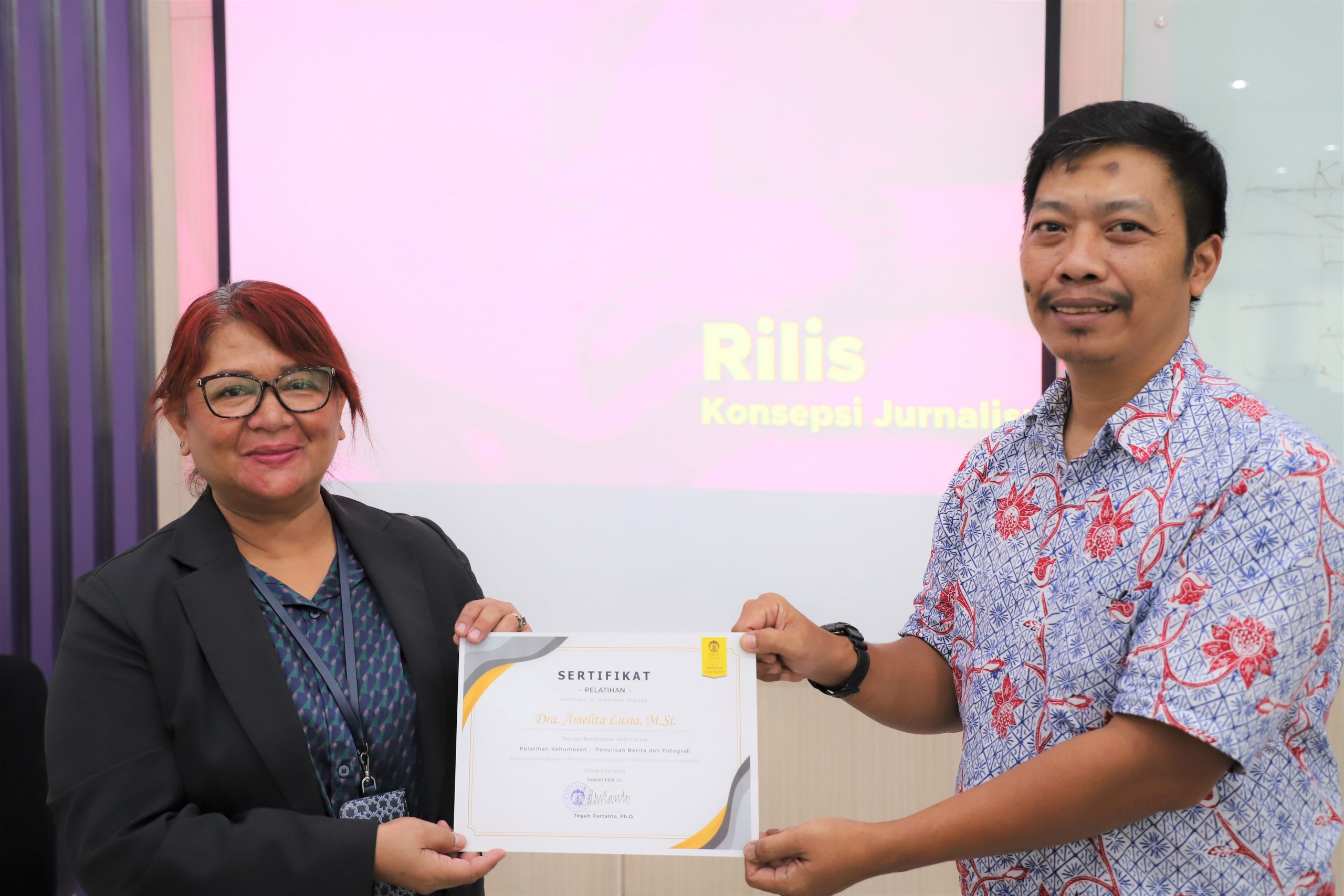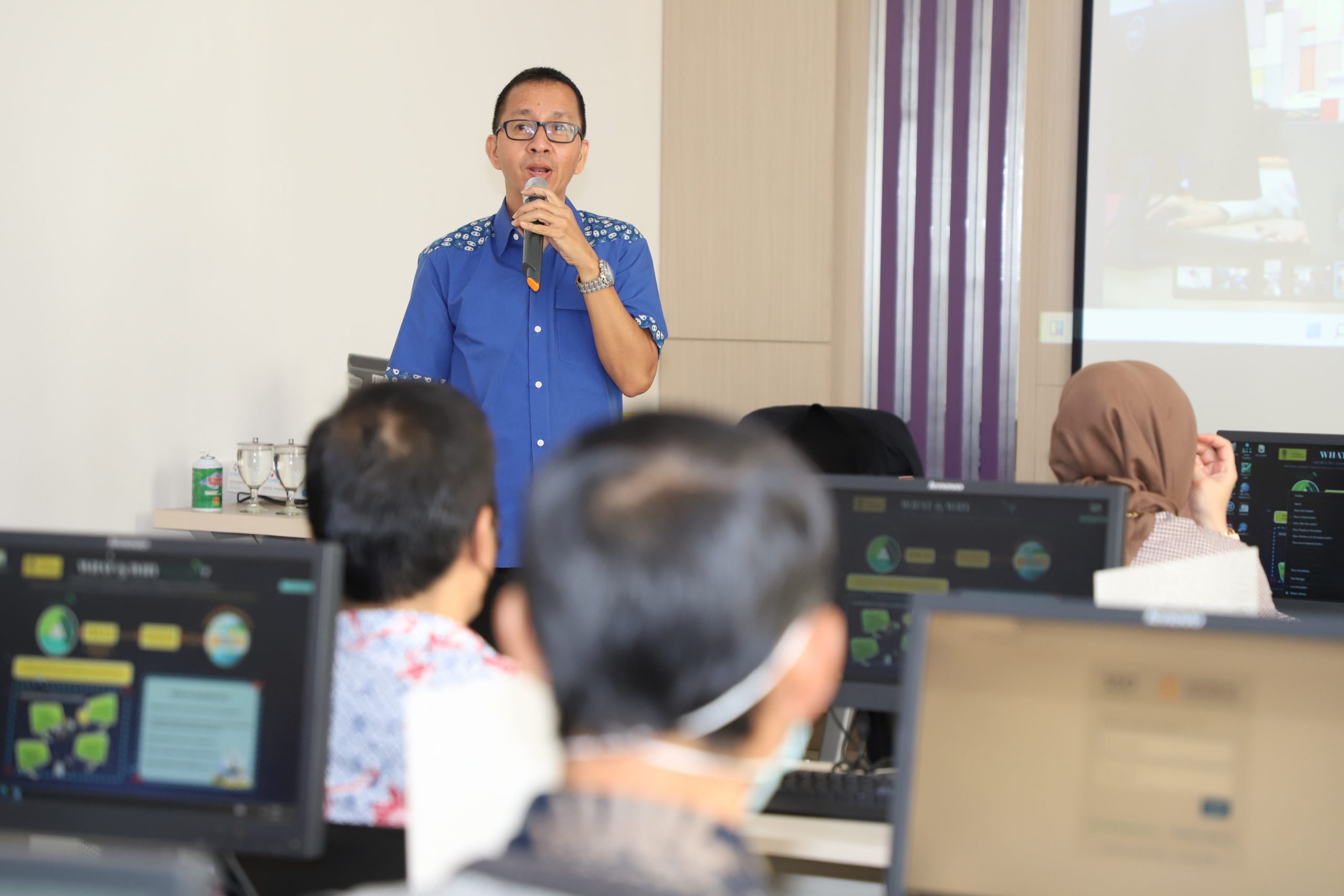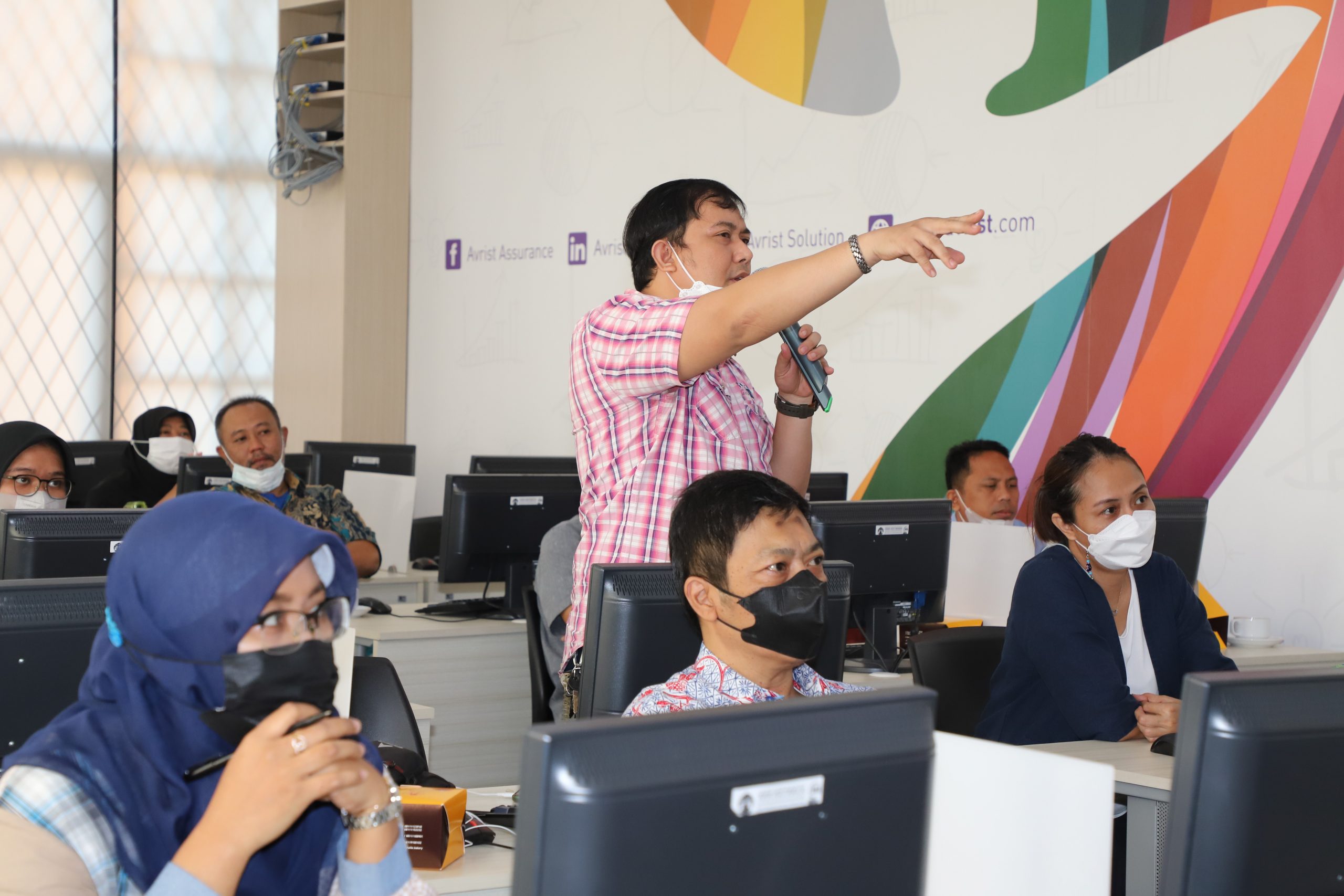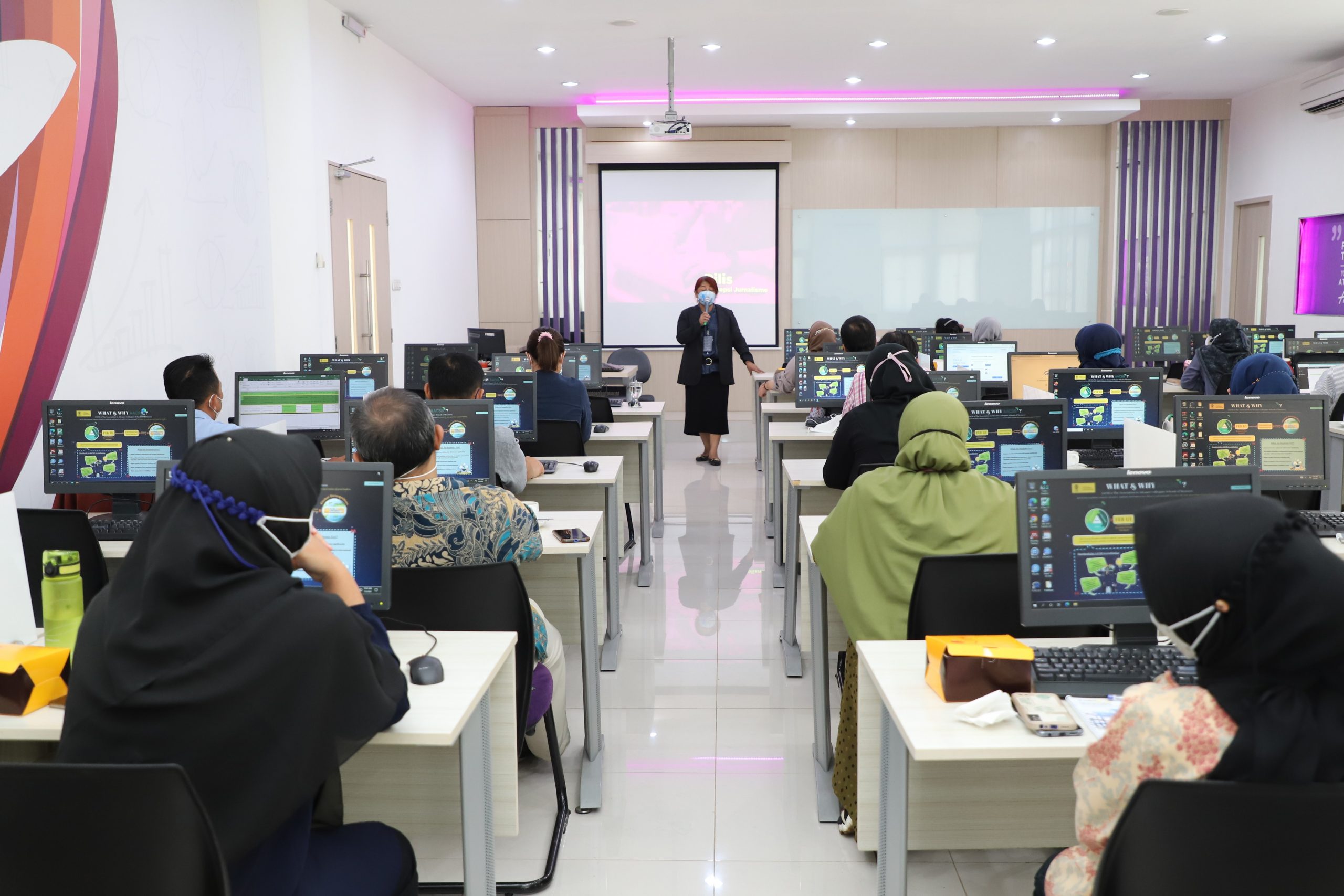Encouraging Publication Quality, FEB UI Holds Photography and News Writing Training
Rifdah Khalisha – Public Relations FEB UI
DEPOK – (5/7/2022) In order to build synergy at the Faculty of Economics and Business, Universitas Indonesia (FEB UI) in terms of disseminating information to the public, the Information, Communication, and Technology Center (ICTC) Unit and the Human Resources Unit (HR) FEB UI held a “Photography and News Writing Training” on Tuesday (5/7). Through this training, the hope is to encourage the quality of news publications and improve the competence of related education personnel at FEB UI.
The training was divided into two sessions with different speakers. In the first session, the topic of Photography by Abror Rizki (Professional Photographer). In the second session, the topic of News Writing by Dra. Amelita Lusia, M.Si. (Head of UI Public Relations and KIP Bureau). The training was also attended by 33 education staff (tendik) representing Work Units and Study Programs in FEB UI.

Acting. ICTC Manager Hendro Sulistio, S.Kom. in his speech, stated that news and information publication activities are significant for an institution in building a positive image, one of which is through disseminating accurate positive information to the public. Many essential and exciting activities at FEB UI must be published, such as public lectures, student activities, achievements, awards, and so on.
Currently, ICTC is mandated to manage information on the FEB UI website by publishing quality news for internal and external parties. Considering the many activities at FEB UI, it needs to continue improving the quality and quantity of its news. After the training, he hopes that the trainees can become contributors of news and information for the Faculty by providing quality writing.
How to Take Good and Correct Photographs?

Abror had come a long way in photography, especially when Mr. Susilo Bambang Yudhoyono trusted him as his photographer in 2004. According to him, the PR team has full access to his activities, flexibility, convenience, and challenges because they are often considered ‘insiders’ who know the plan of the event. They are required to have better photo results so that the media crew gets another angle of an event.
“Therefore, planning is the most important part. A photographer must already have a concept of the moment that will be recorded in a camera shot. So, the photos have been printed even though the event has not yet taken place. In addition, the photographer should not hesitate to ‘master’ the activity area to capture the right moment,” he said.
Abror shared tips on how to photograph events properly. For him, photos must speak even without narration. He emphasized the importance of ‘cropping’ to clarify the message the photographer wants to convey to anyone who sees the photo. That way, the public will be more interested in seeing photos with a message. Then, the photographer should be sensitive to the supporting ornaments in the environment around the object that represents the ‘setting’ of the photo.
He said, “You do not always have to use a Digital Single Lens Reflex (DSLR) camera. Actually, the quality of smartphone cameras is good enough. With simple photo editing applications, photographers can work around its shortcomings, including the backlight.”
Abror urges photographers always to build communication and coordination with related parties to facilitate work in the field. “When photographing leaders, photographers can work with the secretary, committee team, or security team to help understand the situation and help direct the subject to look good on camera,” he said.
How to Find Value in News Writing?
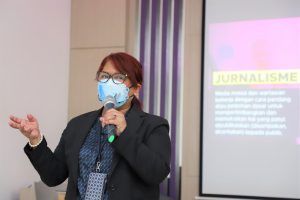
According to Amelita, the PR team as journalists must recognize and use the perspective of journalism in publishing information through news and press releases. It should also consider the interests of the institution.
The object of journalism’s attention to be raised as an issue in the news is divided into two phenomena: events and problems. An event happens relatively quickly and produces consequences (changes) for someone or many people. Meanwhile, a problem is an unpleasant reality that a person or many people have faced for a relatively long time. It is unwanted, so the hope is that it will soon be resolved, resolved, or changed for the better.
He explained, “A good news story must contain elements of reality with supporting facts. The basic guideline is that an event or problem will have news value if it is important or interesting to the public. Especially if it involves the interests of many people.”
“Each person or group will perceive news value at a different level. The determining factors are impact, drama, proximity in a geographical and psychological sense, prominence, conflict, strangeness, progress, and human fate,” he added.
News value and all the factors that determine its degree help assess and decide on news, features, in-depth reports, and opinion articles published in the mass media.
Finally, Amelita is reminded that news will always exist. The FEB UI Education Personnel must be more active in introducing, creating, and enhancing the positive image of FEB UI through news publications. (hs)


